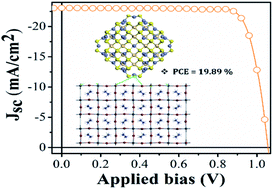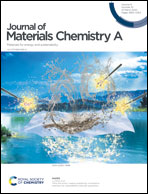Suppression of surface defects to achieve hysteresis-free inverted perovskite solar cells via quantum dot passivation†
Abstract
Technological implementation of organolead trihalide perovskite (OTP) photovoltaics requires suppression of the surface ionic defects and grain boundaries of OTP films. These surface ionic defects have a detrimental effect on the power conversion efficiency (PCE), are notorious for introducing hysteresis into the current density–voltage (J–V) characteristics, and decrease the stability of perovskite solar cells (PSCs). Here, we report the use of core/shell quantum dots (QDs) as passivation layers on the OTP surfaces to decrease the trap density and, simultaneously, stabilize the OTP chemical structure and extend the charge carrier lifetime. Density functional theory (DFT) calculations indicated that the OTP surface defects and grain boundaries were effectively suppressed by the presence of the CdSe/ZnS QDs. We attribute the lower trap density of the OTP to the Se2− anions from the CdSe/ZnS passivation layer, inducing van der Waals interactions between the organic and inorganic components of the framework. For PSCs featuring CdSe/ZnS QD passivation, the PCE reached close to 20% with diminishing hysteresis of the J–V characteristics and fill factor (FF) of 81.44%. Moreover, the PSCs incorporating the CdSe/ZnS QD passivation layer exhibited long-term stability, retaining 75 and 80% of their initial performance after 2400 and 720 h, respectively. This facile interfacial strategy appears highly applicable for preparing high-performance durable OTP-based high optoelectronic devices.



 Please wait while we load your content...
Please wait while we load your content...